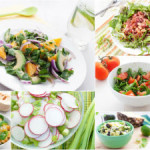Summer Fruits
Eating in-season fruits ensure that our food is as fresh as possible, making it that much more flavorful. Better still, eating in-season fruits is the cost-efficient option because of their relative abundance. Summer is a bountiful time for a number of mouth-watering fruits, so read up to start eating in-season.
Simple List Of Five Summer Fruits
Here are some examples of summer fruits, plus the benefits for those who make a habit of eating them:
Apricots
Smooth and sweet, apricots are smaller cousins to peaches that start being harvested in late spring but can continue to be harvested into late summer. Fresh apricots provide a number of important nutrients, including but not limited to copper, fiber, potassium, vitamin A, and vitamin C. Regular consumption of fresh apricots can protect the eater’s sight, regulate his or her digestion, and even combat the oxidization of bad cholesterol.
Limes
Limes are unusual among citrus fruits in that their peak season lies in summer. Similar to lemons, limes contain enormous amounts of vitamin C, which is the reason that the British Navy once used them to prevent scurvy on long sea voyages. Vitamin C is crucial for maintaining a strong immune system that is useful in fighting even the most common illnesses.
Peaches
Cultivated in cooler climes, peaches come into season in summer, though there are some small variations based on both cultivar and climate. Peaches contain an abundance of both potassium and vitamin A in addition to other important nutrients such as calcium, magnesium, phosphorus, and vitamin E. Once consumed, said fruits promotes the health of the skin, while also serving to ensure that the digestive system runs smoothly. Some research suggests that peaches are both antioxidant and antimicrobial.
Strawberries
Ripening sometime between spring and summer, strawberries are popular because of both their taste and their health benefits. Examples include but are not limited to both antioxidants and anti-inflammation, which combines to both protect the heart while serving to reduce the eater’s chance of developing cancer.
Tomatoes
Despite the confusion, tomatoes are both fruits and vegetables, reaching their peak in mid summer. The same chemical that is responsible for their bright red color also makes for an outstanding antioxidant. Better still, tomatoes contain nutrients useful in both promoting heart health and reducing the risk for cancer.
Conclusion
Of course, this is no more than a miniscule portion of the complete list of summer fruits, which can range from beloved favorites such as apples and cherries to more exotic produce such as figs and dragonfruit.






